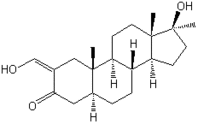Body wasting and loss of lean body mass (LBM) have been associated with increased mortality and disease progression and reduced quality of life in patients with human immunodeficiency virus (HIV) infection. Research has shown that it is not as simple as increasing energy intake to restore this LBM. Health care professionals believed that the protease inhibitors (PI) would reverse wasting by effectively suppressing the HIV virus. However, it appears that patients gained mostly fat from PI therapy.
The failure of many treatments to help restore LBM has inspired investigations of protein anabolic agents, including recombinant human growth hormone (rhGH), insulinlike growth factor I (rhIGF-I), and synthetic testosterone derivatives. A group of researchers recently gathered to explore the possibilities of these anabolic agents in the restoration of LBM in HIV-infected patients.
The research showed that growth hormone did result in sustained increases in weight and LBM. Overall, treatment with these pharmacologic doses of rhGH (0.1 mg/kg/day) was well tolerated in patients with HIV-associated wasting and did not affect progression of AIDS, viral load, or death over the short study periods. Some researchers speculated that insulin-like growth factor I (IGF-I) would be a more effective treatment than growth hormone. However, findings are in agreement that there is no reason to pursue rhIGF-I as a possible therapy. Researchers then reviewed the effects of a combination of growth hormone and insulin-like growth factor, finding that there is little justification for using a combination of these two drags.
Use of synthetic testosterone derivatives such as nandrolone decanoate, oxandrolone, and oxymetholone has increased, but there remain few published studies on the efficacy or safety of these agents in HIV-associated wasting. Nandrolone decanoate has been approved for use in anemia associated with end-stage renal disease and has shown to increase LBM in these patients as well. Placebo-controlled trials are underway for this derivative in HIV-infected patients but the results are not yet published. Several open-label studies suggests that nandrolone could aid in weight increase and acquisition of LBM. Oxandrolone and oxymetholone also proved mildly successful in producing weight gain in patients with HIV-associated weight loss. However, further studies need to be performed.
It is agreed that reversal of wasting could improve survival and quality of life while decreasing mortality in patients with HIV. From the limited results that are available, it also appears that anabolic therapy can increase LBM but no data is available that proves this therapy could improve survival rates or increase quality of life. Further research is needed to determine the appropriate dosing and maintenance regimens to limit side effects and costs of these treatments.
Kathleen Mulligan, Viva W. Tai, and Morris Schambelan, Use of Growth Hormone and Other Anabolic Agents in AIDS Wasting, Journal of Parenteral and Enteral Nutrition 23: S202 - S209 (November-December 1999) [Correspondence: Kathleen Mulligan, PhD, Division of Endocrinology, San Francisco General Hospital, Building 100, Room 321, 1001 Potrero Ave., San Francisco, CA 94110]
COPYRIGHT 2000 Technical Insights, a divison of John Wiley & Sons.
COPYRIGHT 2000 Gale Group



